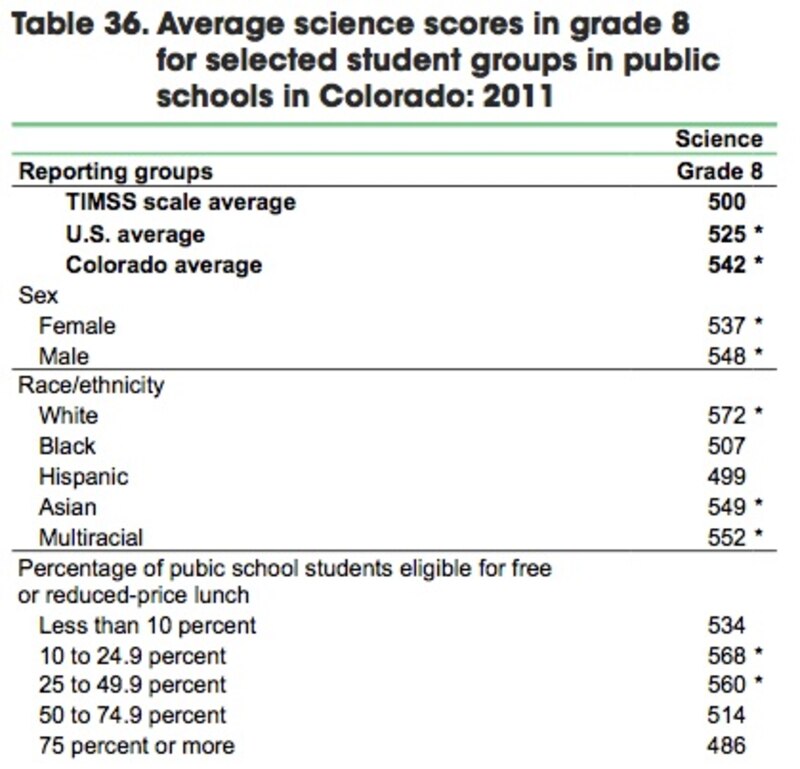The good news is that Colorado eighth-graders performed above international and national averages in science, according to the Trends in International Mathematics and Science Study.
The not so good news is that while the state’s eighth-graders scored higher than their international peers in math, their scores matched the U.S. national average.
The average math scores of Korea, Chinese Taipei, Hong Kong and Japan as well as in the state of Massachusetts were significantly higher than Colorado’s average scores for both science and mathematics. Other states that outperformed Colorado in mathematics were North Carolina and Minnesota.
These results represent the first time Colorado eighth-graders have taken the test.
Colorado’s average mathematics score (518) is above the international average of 500 and the U.S. average of 509. Colorado is one of 16 systems that had higher percentages of eighth-graders reaching the advanced TIMMS international math benchmark than the U.S. as a whole. Thirty-six countries/education systems scored lower than Colorado in math, while Colorado scored lower than 10 countries/education systems. Colorado scored significantly higher than the TIMSS math average for male, female, white and Asian students. The scores of students from other racial groups were not significantly different from the TIMSS scale average.

Colorado’s average science score (542) is in the top third of all countries/education systems and above the U.S. average (525). Colorado is one of 18 systems that had higher percentages of eighth-graders reaching the Advanced TIMSS international science benchmark than the U.S. Thirty-nine countries/education systems scored lower than Colorado, while six countries/education systems scored higher.
Colorado scored higher than the TIMSS science average for students in schools with 10 to 50 percent free and reduced-price lunch eligibility.
Colorado Department of Education spokeswoman Megan McDermott said the test results provide “a critical international comparison.”
“While Colorado students performed better than the international and national average, the results show that Colorado has the opportunity to improve in our global competitiveness in mathematics and science achievement, especially compared to our East Asian counterparts,” McDermott said.
Colorado was one of eight states selected to participate in the 2011 TIMSS. Testing was paid for by the National Center for Education Statistics under the U.S. Department of Education.
The test was given to eighth graders in 38 countries and 18 education systems. Nine of the systems are in the U.S.: Alabama, California, Colorado, Connecticut, Florida, Indiana, Massachusetts, Minnesota and North Carolina.
In Colorado, 53 schools with 2,167 students participated in the international group, and 10 Colorado schools with 500 students participated in the national group.
The tests were administered from April 4, 2011, through May 27, 2011.
As Colorado moves forward with its new science and mathematics assessments, these TIMSS results can be used to inform where Colorado sets its proficiency levels to ensure that Colorado results reflect this international benchmark.
The Trends in International Mathematics and Science Study is an international comparative study of student achievement. TIMSS 2011 represents the fifth such study since TIMSS was first conducted in 1995. TIMSS assesses the mathematics and science knowledge and skills of fourth- and eighth-graders and is aligned with mathematics and science curricula in the participating education systems.
For more information on how Colorado performed, visit this site..
